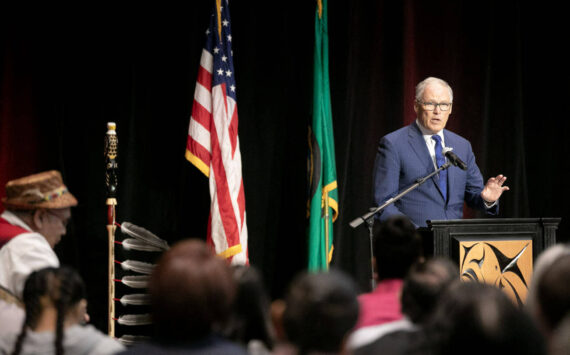Tacoma City Manager Eric Anderson Tuesday updated Tacoma City Councilmembers on a long-term plan that, on paper at least, would dramatically change downtown parking and public transportation infrastructures.
Anderson’s draft plan is the latest chapter in a series of meetings between Anderson and City staff, downtown merchants and property owners, University of Washington Tacoma, and local transit agencies to provide downtown parking and transportation options that would protect environmentally sensitive areas, protect neighborhoods, and densify downtown.
Today, said Anderson, Tacoma is at a “unique time” to create something “quite remarkable” with its downtown parking and transportation systems.
“Nobody wants to be Seattle,” he said, referring to the city’s parking challenges, “and Portland is the one that’s held up as pretty good. But we have to follow our own advantages and opportunities.”
He also said it was key to examine this issue because most urban planners expect Tacoma to add 127,000 more residents and 67,000 more jobs in the coming decades. “We want those people in our downtown,” Anderson said, “but we don’t want their cars.”
On its face, the plan relies heavily on non-motorized and public transportation to connect downtown to neighborhoods, while still preserving options for motorists on downtown’s periphery. He presented nine recommendation for achieving a more “robust” downtown parking and transit system during this week’s City Council study session.
Those recommendations include:
— create a city-wide transportation strategy that is integrated, multimodal, and comprehensive;
— build a streetcar system that connects downtown, neighborhoods, and business districts;
— build a city-wide bicycle-and-pedestrian system using trails and existing street right-of-ways;
— create a parking system, which could include metered parking downtown, that is self-supporting, flexible, comprehensive, and well-integrated into the city’s transportation system;
— maintain a parking enterprise fund that is separate from the City’s General Fund;
— use strategic pricing at downtown garages and on parking meters that preserve a 15 percent vacancy rate, which Anderson said is an industry standard that still preserves available parking for visitors and residents;
— build “parking supplies,” or garages, in periphery of downtown using revenue from the City’s parking system (not General Fund revenue);
— incent commuters and downtown workers to park in those garages by establishing lower prices;
— eliminate parking requirements for new development downtown
Anderson said he would host six more meetings with downtown stakeholders to further discuss the issue. He will return to City Council in October with final recommendations for moving forward. If Council approves those recommendations, it would likely direct staff to create an advisory committee to initiate implementation.
On Tuesday, councilmembers mostly supported the idea, but requested additional information.
“I know we have to be patient, but I would like a preliminary idea as to how long this will take,” said Councilmember Julie Anderson. “Hopefully it’s ambitious because we have really captured people’s imaginations” on this topic.
“There is a great alignment between what you heard today and the stakeholders,” said Tacoma-Pierce County Chamber and Business Improvement Area representative Paul Ellis. “We’re not in total agreement, but dialogue has started. From the standpoint of the business community, we’re optimistic.”







